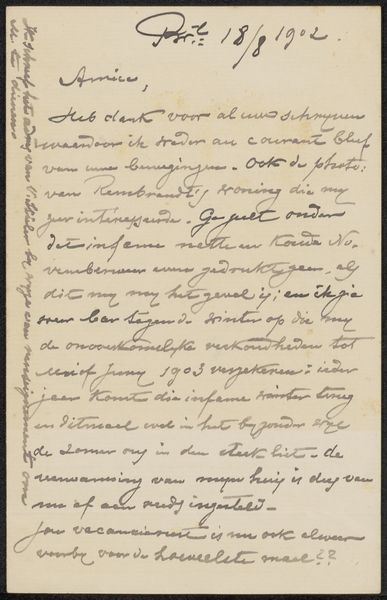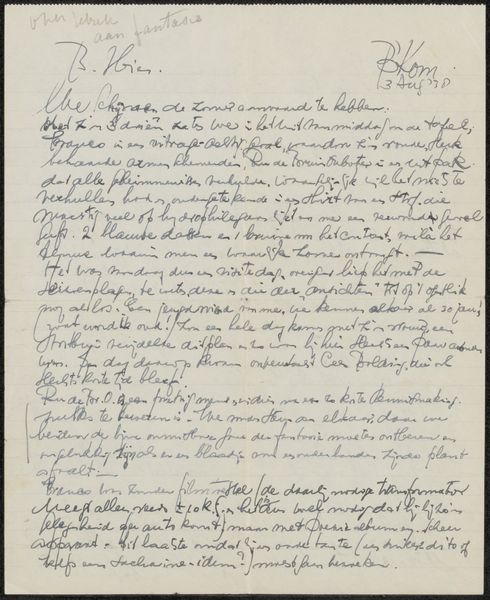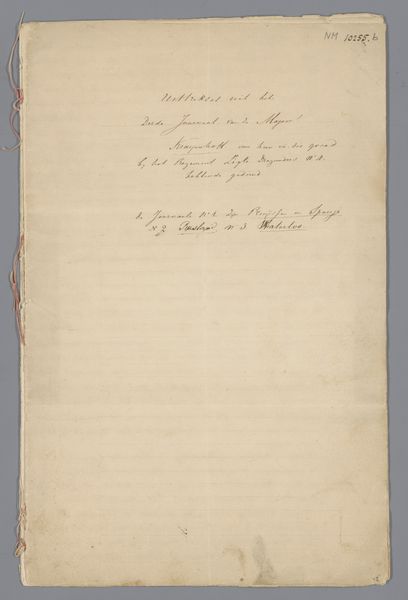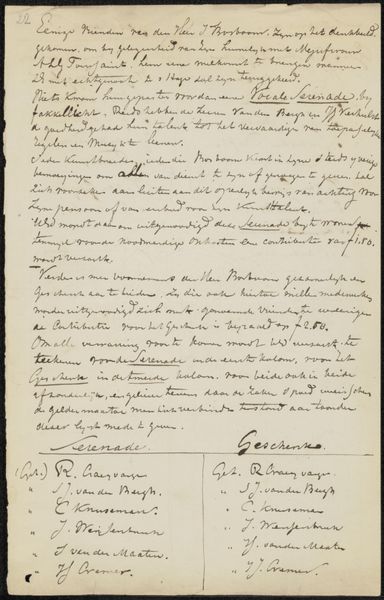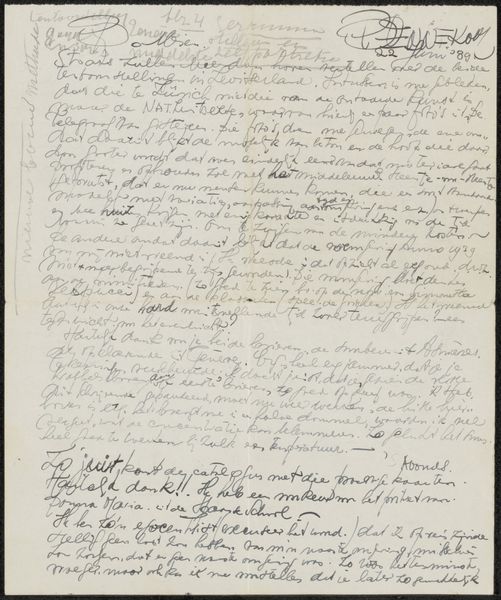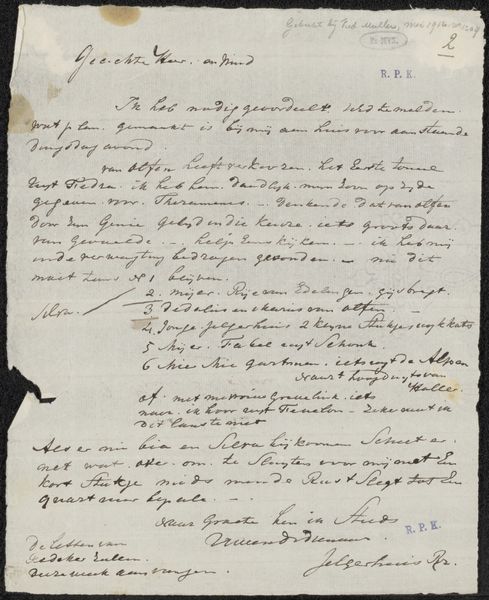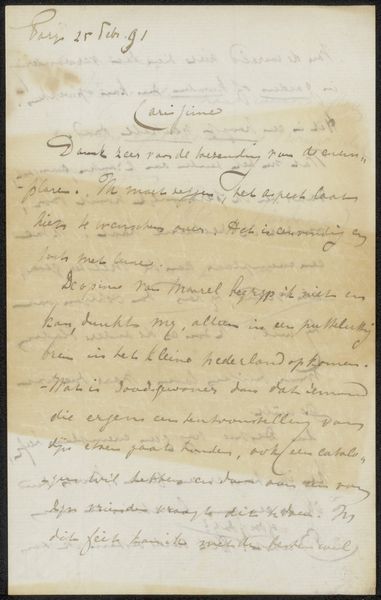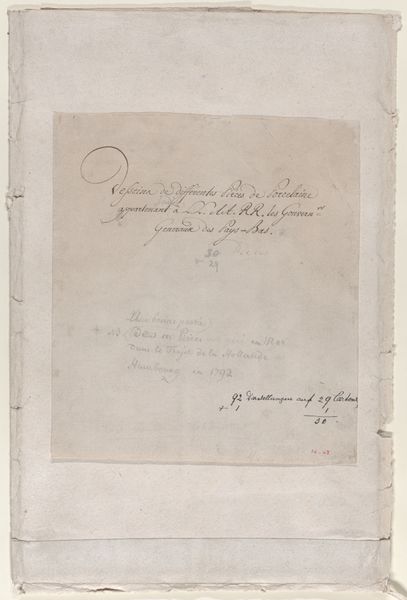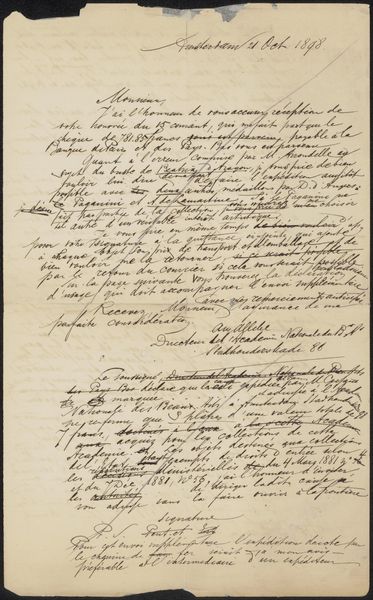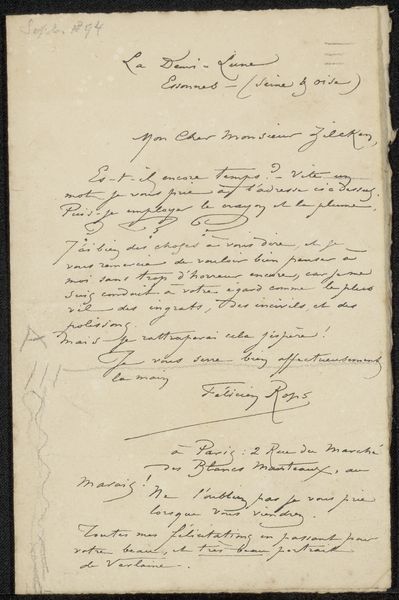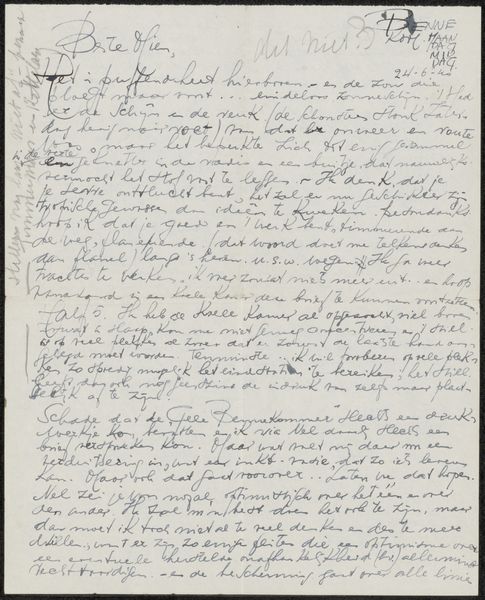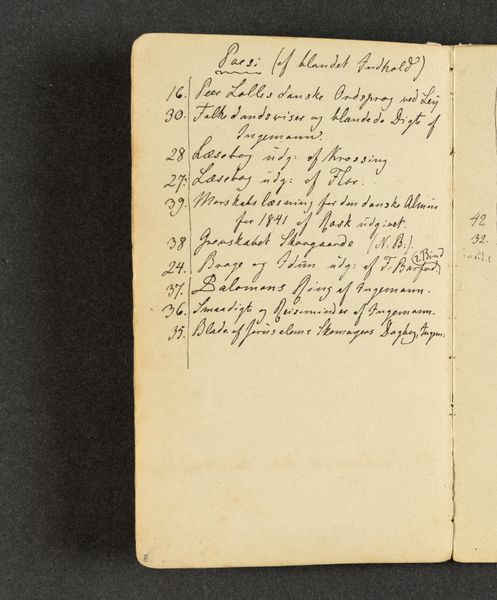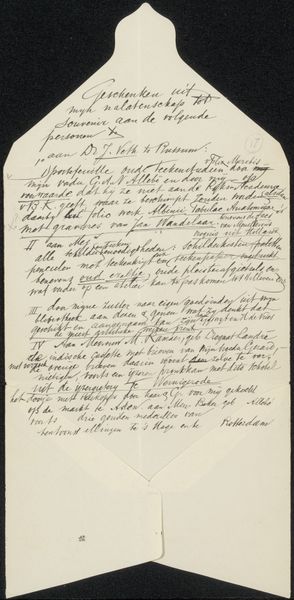
Titelprent voor een prentserie met momenten uit het leven van monsieur Quelconque 1895
0:00
0:00
georgeshermannrenepaul
Rijksmuseum
drawing, graphic-art, lithograph, print, paper, typography, ink
#
drawing
#
graphic-art
#
art-nouveau
#
lithograph
# print
#
paper
#
typography
#
ink
#
symbolism
Dimensions: height 434 mm, width 326 mm
Copyright: Rijks Museum: Open Domain
Editor: This is the title page for a print series called "The Life of Monsieur Quelconque in Ten Lithographic Pictures" by Hermann Paul, dating back to 1895. It’s held at the Rijksmuseum. There’s something so poignant about it being handwritten-style lithography, like a personal notebook made public. How do you interpret this work, thinking about its original context? Curator: Well, considering this was made in the Art Nouveau and Symbolist period, we can read this as a commentary on the public role of art. It mimics the flow of consumer lithographs, cheap books and papers from that time, which democratized knowledge and opinions. But its title evokes larger spectacles "of nature." Are everyday men elevated or demeaned by popular media? Editor: So, the "Monsieur Quelconque"— the "Mr. Average"— is made a spectacle of in these readily available prints. Curator: Exactly! The choice of lithography, a technique perfect for mass production, brings that point home. He’s born, goes to school, falls in love, votes, and dies… a sequence of milestones any ordinary person might experience, trivialized through repetition. Editor: The squiggles between the lines contribute to that sense of overwhelming ordinariness, right? It almost mocks the ambition to make art about "real" life. Curator: Precisely. We must also consider the context of French society at the fin de siècle; a period of both technological progress and growing anxieties. Hermann Paul hints to the superficial nature of public life through easily reproducible prints. It's asking us what value to give this new democratization of images and lives. Editor: That gives me a new way to see it. I was caught up in its personal feel, but now I appreciate its cultural critique. Curator: And I find myself thinking about how our own digitally reproduced images impact us today. Food for thought, isn't it?
Comments
No comments
Be the first to comment and join the conversation on the ultimate creative platform.
